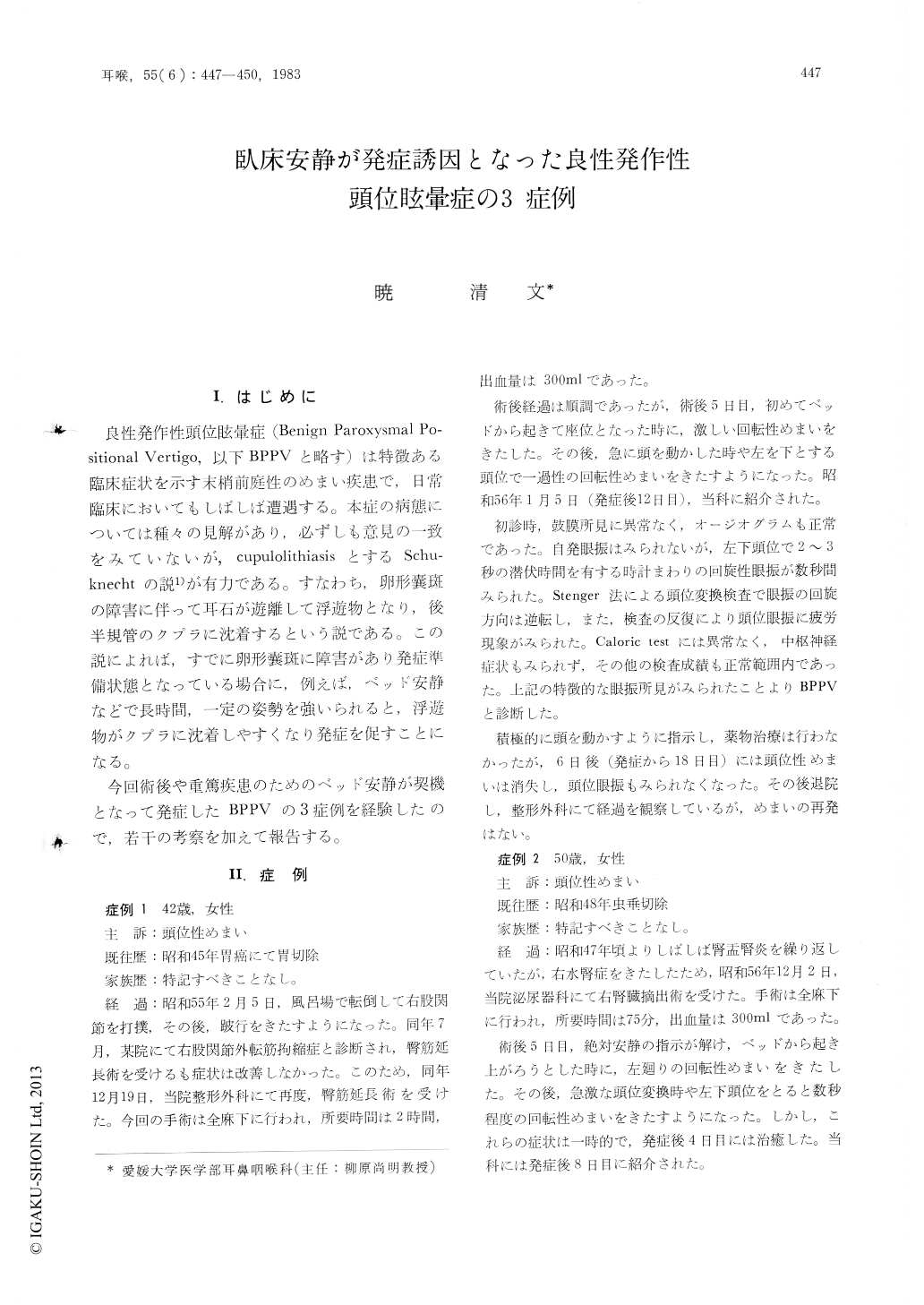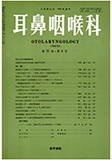Japanese
English
- 有料閲覧
- Abstract 文献概要
- 1ページ目 Look Inside
I.はじめに
良性発作性頭位眩量症(Benign Paroxysmal Positional Vertigo,以下BPPVと略す)は特徴ある臨床症状を示す末梢前庭性のめまい疾患で,日常臨床においてもしぼしば遭遇する。本症の病態については種々の見解があり,必ずしも意見の一致をみていないが,cupulolithiasisとするSchuknechtの説1)が有力である。すなわち,卵形嚢斑の障害に伴って耳石が遊離して浮遊物となり,後半規管のクプラに沈着するという説である。この説によれば,すでに卵形嚢斑に障害があり発症準備状態となっている場合に,例えば,ベッド安静などで長時間,一定の姿勢を強いられると,浮遊物がクプラに沈着しやすくなり発症を促すことになる。
今回術後や重篤疾患のためのベッド安静が契機となって発症したBPPVの3症例を経験したので,若干の考察を加えて報告する。
Three cases of benign paroxysmal positional vertigo (BPPV) evoked by strict bed rest, two for postoperative care and one for serious illness, were reported. Schuknecht proved that BPPV was caused by a deposit on the posterior canal cupola, and termed it as cupulolithiasis. When BPPV is in its latent period due to the damage of the utricle by various causes, strict bed rest may facilitate the deposition of the degenerated utricular otoconia on the posterior canal cupula. In our three cases, BPPV developed 5 to 7 days from the beginning of strict bed rest. The onset of the disease was usually noticed when the patients first arose on the bed. The prognoses were good in all cases only by letting their heads shake on purpose.

Copyright © 1983, Igaku-Shoin Ltd. All rights reserved.


